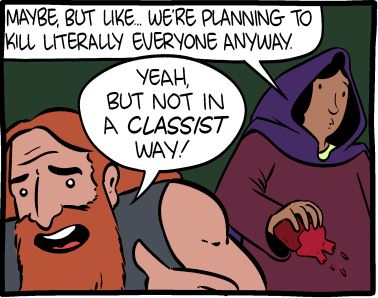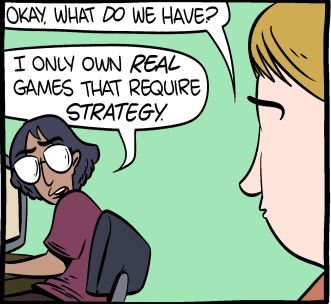I’m not sure that there’s any age that’s too-young at which to try to cultivate an interest in science. Once a child’s old enough to ask why something is the case, every question poses an opportunity for an experiment! Sometimes a thought experiment is sufficient (“Uncle Dan: why do dogs not wear clothes?”) but other times provide the opportunity for some genuine hands-on experimentation (“Why do we put flowers in water?”). All you have to do is take every question and work out what you’d do if you didn’t know the answer either! A willingness to take any problem with a “let’s find out” mentality teaches children two important things: (a) that while grown-ups will generally know more than them, that nobody has all the answers, and (b) that you can use experiments to help find the answers to questions – even ones that have never been asked before!

Sometimes it takes a little more effort. Kids – like all of us, a lot of the time – can often be quite happy to simply accept the world as-it-is and not ask “why”. But because a fun and educational science activity is a good way to occupy a little one (and remember: all it needs to be science is to ask a question and then try to use evidence to answer it!), I’ve been keeping a list of possible future activities so that we’ve got a nice rainy-day list of things to try. And because we are, these days, in an increasingly-large circle of breeders, I thought I’d share some with you.

Here’s some of the activities we’ve been doing so far (or that I’ve got lined-up for future activities as and when they become appropriate):
-
Measuring and graphing rainfall
We’ve spent a lot of time lately taking about calendars, weather, and seasons, so I’m thinking this one’s coming soon. All we need is a container you can leave in the garden, a measuring jug, and some graph paper. -
Experimenting with non-Newtonian fluids
You can make a dilatant fluid with cornflower and water: it acts like a liquid, but you can slap it and grab it like a solid. Fine, very wet sand (quicksand!) demonstrates pseudoplasticity which also explains how paint ‘blobs’ on your brush but is easy to spread thin on the paper. -
Magnets
I’m really looking forward to the opportunity to play with magnets: we’ve started already with thanks to Brio wooden railway and talking about the fact that the rolling stock will attach one way around (and seem to jump together when they get close) but repel the other way around, and we’ve also begun looking at the fact that if you remove a carriage from the middle of a train the remaining segments are already correctly-aligned in order to be re-attached. -
Different kinds of bouncy balls
We’ve had fun before measuring how high different kinds of balls (air-filled rubber football, large solid rubber ball, skeletal rubber ball, small solid rubber ball) bounce when dropped from a stepladder onto a patio and talking about how ‘squishy’ they are relative to one another, and speculating as to the relationship between the two.

-
Demonstrating capillary action/siphoning
Two containers – one with a fluid in and one without – joined over the rim by a piece of paper towel will eventually reach an equilibrium of volume, first as a result of capillary action causing the fluid to climb the paper and then using a siphon effect to continually draw more over the edge. -
Illustrating the solar system (to scale)
It helps adults and children alike to comprehend the scale of the solar system if you draw it to scale. If you’ve got a long street nearby you can chalk it onto the pavement. If not, you’ll need a very small scale, but doing the Earth and Moon might suffice. -
Electricity
Batteries, wires, and LEDs are a moderately safe and simple start to understanding electricity. Taking a ‘dead’ battery from a drained toy and putting it into the circuit shows the eventual state of batteries. Connecting lights in series or parallel demonstrates in very simple terms resistance. Breaking or joining a circuit illustrates that switches function identically wherever they’re placed on the circuit. -
Vortices
I’m interested in trying to replicate this experiment into making different kinds of standing vortices in water, but I might have to wait until our little scientist has slightly more patience (and fine motor control!).

-
Centripetal force
We’ve been lucky enough to get to talk about this after using a whirlpool-shaped piece of marble run, but if we hadn’t then I was thinking we’d wait until the next time it was sunny enough for outdoor water play and use the fact that a full bucket can be spun around without spilling any in a similar way. -
Bug counting
Take a quadrant of garden and count the different kinds of things living in it. Multiply up to estimate the population across the garden, or measure different parts (lawn versus bedding plants versus patio, direct sunlight versus shade, exposed versus covered, etc.) to see which plants or animals prefer different conditions. -
Growing plants
Caring for different kinds of plants provides an introduction to botany, and there’s a lot to observe, from the way that plants grow and turn to face the light to the different stages of their growth and reproduction. Flowers give an attractive result at the end, but herbs and vegetables can be eaten! (Our little scientist is an enormous fan of grazing home-grown chives.) -
Mechanics and force
We’ve taken to occasionally getting bikes out of the shed, flipping them upside-down, and observing how changing the cogs that the chain runs over affects how hard you need to push the pedals to get movement… but also how much the movement input is multiplied into the movement of the wheel. We’re not quite at a point where we can reliably make predictions based on this observation, but we’re getting there! I’m thinking that we can follow-up this experiment by building simple catapults to see how levers act as a force multiplier.

-
Chromotography of inks
I’ve been waiting to do this until I get the chance to work out which felt tip pens are going to give us the most-exciting results… but maybe that’s an experiment we should do together, too! Colouring-in coffee filter papers and then letting them stand in a cup of water (assuming a water-soluable ink) should produce pretty results… and show the composition of the inks, too! -
Colour mixing
Mixing paint or play-doh is an easy way to demonstrate subtractive colour mixing. We got the chance to do some additive colour mixing using a colour disk spinner at a recent science fair event, but if we hadn’t I’d always had plans to build our own, like this one. -
Structure and form of life
Looking at the way that different plants and animals’ physical structure supports their activities makes for good hands-on or thought-driven experimentation. A day at the zoo gets a few steps more-educational for a preschooler when you start talking about what penguins are able to do as a result of the shape of their unusual wings and a walk in the park can be science’d-up by collecting the leaves of different trees and thinking about why they’re different to one another. -
Stabbing balloons
The classic magic trick of poking a skewer through a balloon… with petroleum jelly on the skewer… lends itself to some science, so it’s on my to-do list.

-
Surface tension
Water’s such a brilliant chemical because it’s commonplace, safe, and exhibits so many interesting phenomena. Surface tension can be demonstrated by ‘floating’ things like paperclips on top of the surface, and can be broken by the addition of soap. -
Astronomy
In the winter months when the sun sets before bedtime are a great time to show off stars, planets, satellites and the moon. Eyes or binoculars are plenty sufficient to get started. -
Life cycles
I was especially pleased when our nursery kept an incubator full of chicken eggs so that the children could watch them hatch and the chicks emerge. We’d looked at this process before at a farm, but it clearly had a big impact to see it again. Helping to collect eggs laid by my mother’s chickens helps to join-up the circle. Frogspawn and caterpillars provide a way to look at a very different kind of animal life. -
Putting baking soda into things
Different everyday kitchen liquids (water, vinegar, oil…) react differently to the addition of baking soda. This provides a very gentle introduction to chemistry and provides an excuse to talk about making and testing predictions: now that we’ve seen what cold water does, do you think that hot water will be the same or different?

-
Bubbles and foams
Blowing bubbles through different types of mesh (we just used different kinds of tea towels elastic-banded to the cut-off end of a plastic bottle) demonstrates how you can produce foams of different consistencies – from millions of tiny bubbles to fewer larger bubbles – because of the permeability of the fabric. And then we wrecked the last tea towel by adding food colouring to it so we could make coloured foams (“bubble snakes”). -
Phase transition
Start with ice and work out what makes it melt: does it melt faster in your hand or in a dish? Does it melt faster or slower if we break it up into smaller parts? If we ‘paint’ pictures on the patio with them, where does the water go? I’m also thinking about ways in which we can safely condense the steam (and capture the vapour) from the kettle onto e.g. a chilled surface. Once we’re at a point where a thermometer makes sense I was also considering replicating the experiment of measuring the temperature of melting snow: or perhaps even at that point trying to manipulate the triple point of water using e.g. salt. -
Dissection
Take apart the bits of a flower, or look in detail at the parts of a bone-in cut of meat, and try to understand what they’re all for and why they are the way they are. -
What floats?
Next time the paddling pool is out, I’d like to start a more-serious look at which things float and which things don’t any try to work out why. What might initially seem intuitive – dense (heavy-for-their-size) things sink – can be expanded by using plasticine to make a mixture of ‘sinking’ and ‘floating’ vessels and lead to further discovery. I’m also thinking we need to do the classic ‘raisins in a fizzy drink’ thing (raisins sink, but their rough surfaces trap the bubbles escaping from the now-unpressurised liquid, causing them to float back up to shed their bubbles).

So there’s my “now and next” list of science activities that we’ll be playing at over the coming months. I’m always open to more suggestions, though, so if you’re similarly trying to help shape an enquiring and analytical mind, let me know what you’ve been up to!



